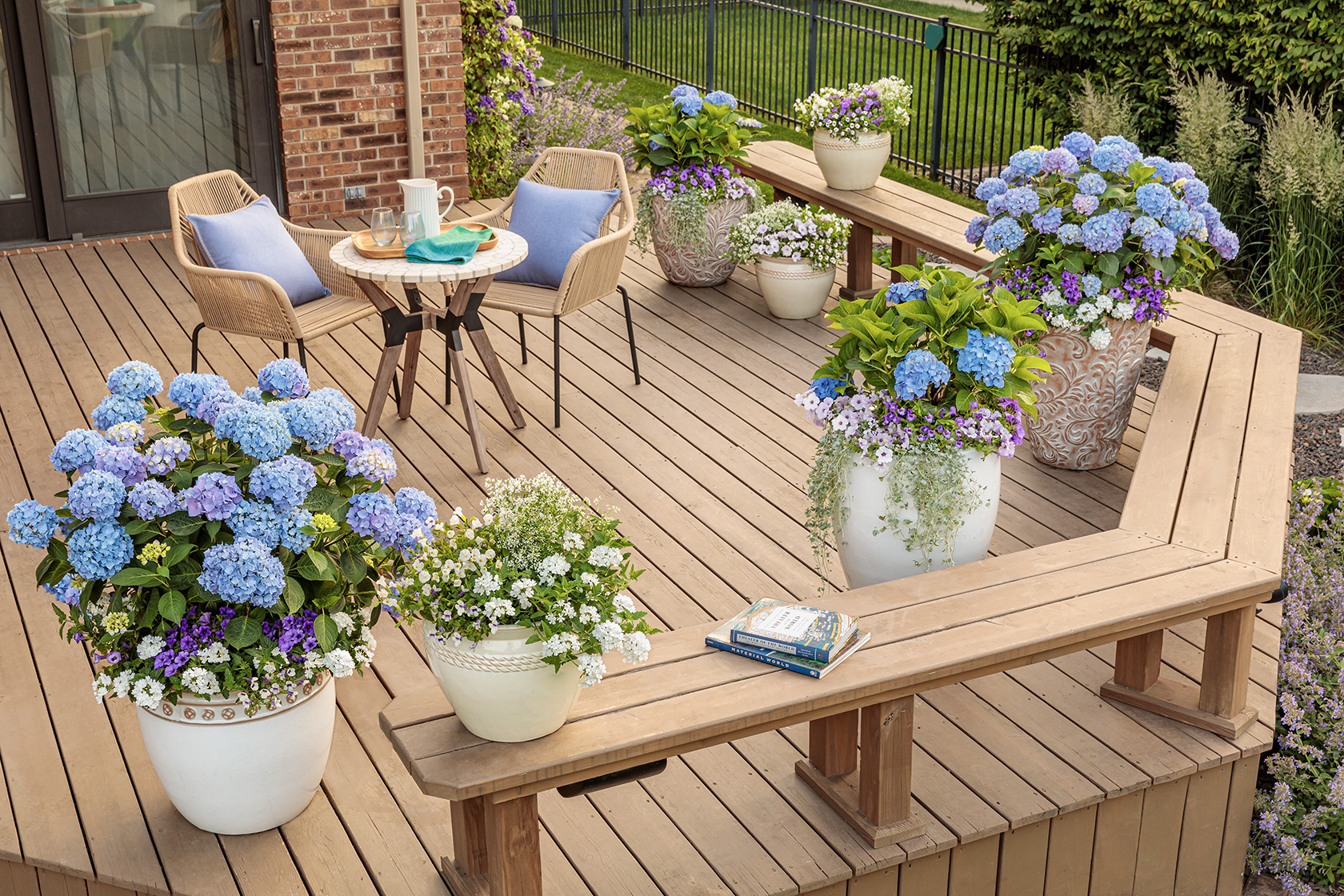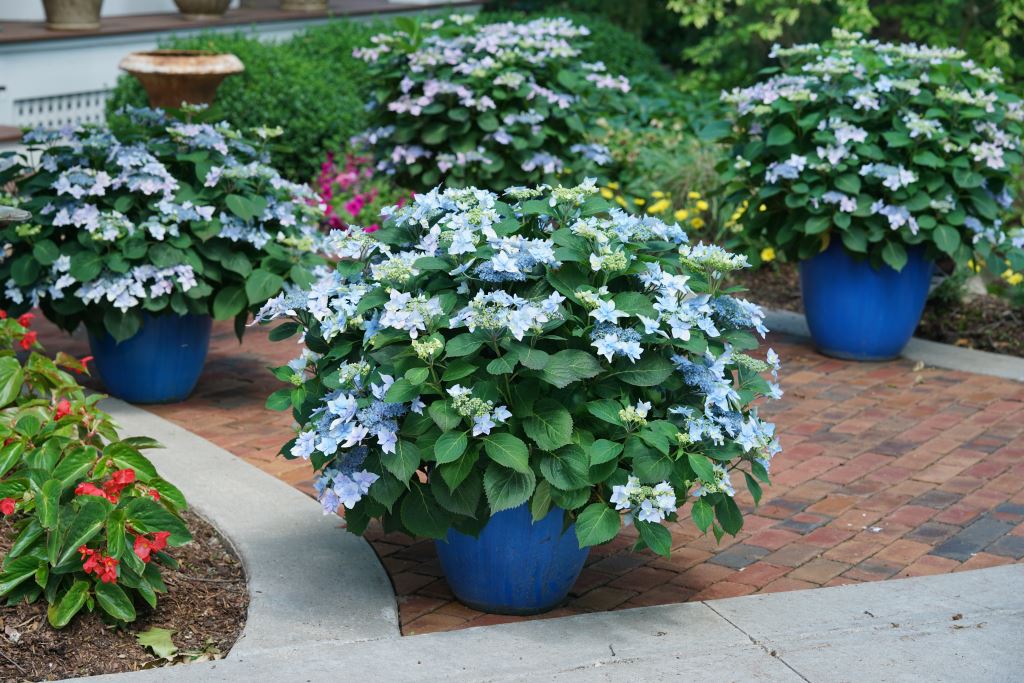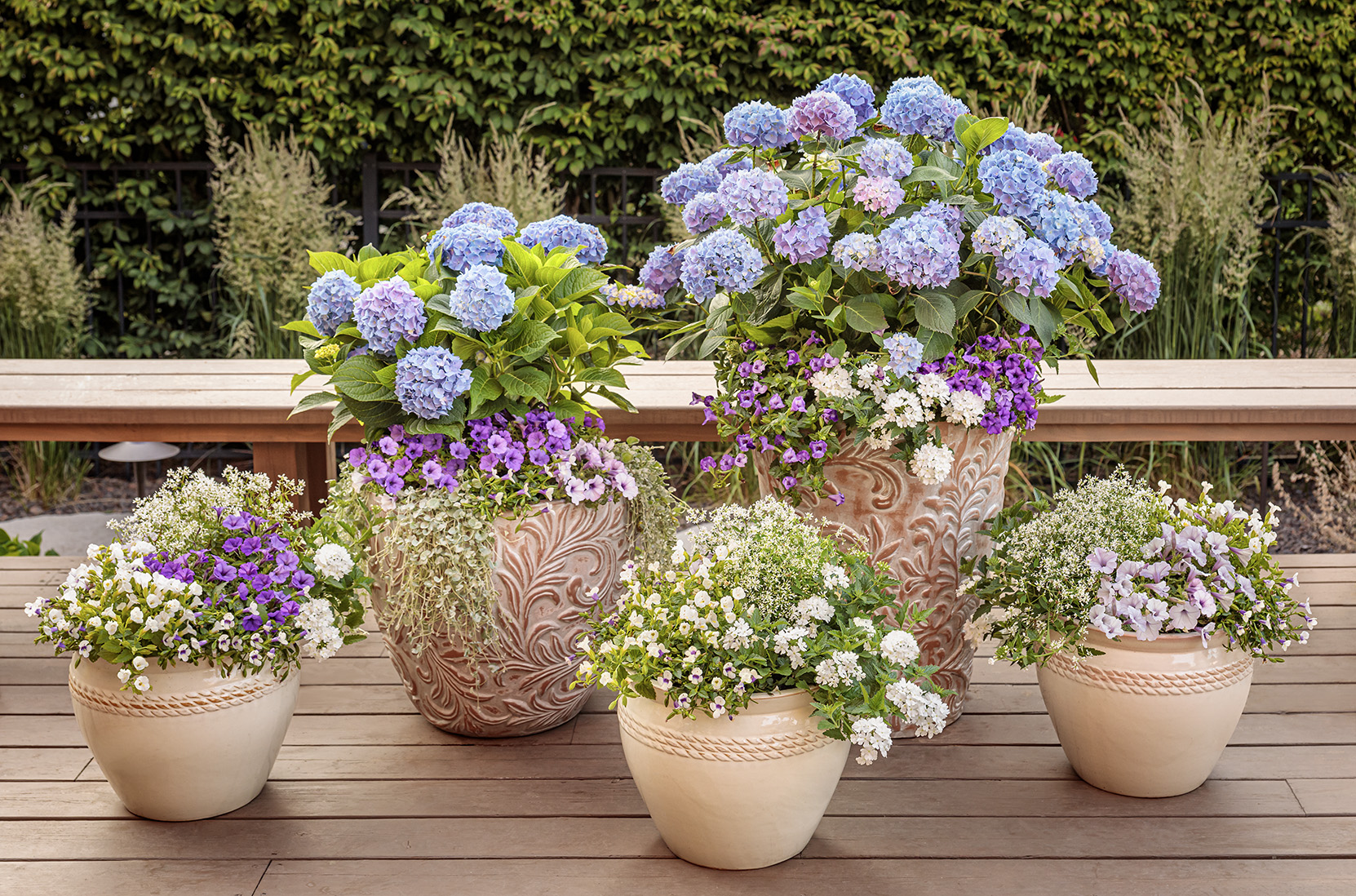How to Grow Hydrangeas in Pots
For unbelievable beauty anywhere you want it, grow hydrangeas in pots and put it where you need it to go! Porch, driveway, balcony, sidewalk, deck. If you can dream it, chances are you can beautify it. No matter if your spot has full sun, dappled shade, or something in between, there’s a hydrangea you can display there.
There are a couple of key factors to a successfully hydrangea container gardening and it starts with your approach. Consider if you intend for your hydrangea planting to be temporary or permanent. Temporary plantings are meant to perform for one season only. At the end of the season, you might plant your hydrangea out in the garden or give it to a friend who has space in their landscape. Permanent plantings stay in the same container for several seasons before either getting transplanted into a bigger pot or to a spot in the garden.
Now let’s dig in to the details!
Container Choice • Soil • Watering • Fertilizer • Plant Choice • Planting • Preparing for Winter • Transplanting
Container Choice
Temporary
Pretty much any container will work with a temporary planting! As long as it holds soil and has a big enough hole (or a few) in the bottom to release excess water, you are good to go. This means you can use troughs, vintage vessels from antique stores, or the DIY container from your Pinterest board.
If you’re more of a laid-back gardener, consider using AquaPots®. These high-quality, self-watering pots make hydrangea container gardening a breeze. Not only are the pots themselves gorgeous, but the constant supply of water also keeps hydrangeas looking fresh and fabulous too. It’s no secret that container gardening takes a little extra effort with the setup of drip irrigation or frequent hand watering, so this system could really save you some time! Note that AquaPots are only recommended for temporary plantings in cold climates because they could crack if you don't empty them before the winter freeze arrives.
Permanent
The container material is important if you live in an area that experiences frost. Choose a weatherproof pot; many will have a sticker that lets you know it’s frostproof. If you’re unsure whether or not your container will work, just avoid pots that are clay, terra cotta, or ceramic. Containers that aren’t frostproof often break or shatter when freezing temperatures strike, leaving the plants' roots exposed to the harshness of winter.
If you’re lucky enough to live in an area that doesn’t freeze, AquaPots can be used for permanent plantings. Really, any clay, terra cotta, or ceramic pot that catches your eye will work for hydrangeas.
The size of your container matters, since the plant's roots will need room to grow into during their stay. We’ve found that pots measuring at least 16-24” wide and deep will often accommodate a good-sized hydrangea container gardening nicely for a few years.
If you’ve got a heavy container, think ornate and old, move it into place before you plant the hydrangea. Also, if you plan to overwinter it in a more sheltered spot, plan to have a dolly on hand to move it easily.
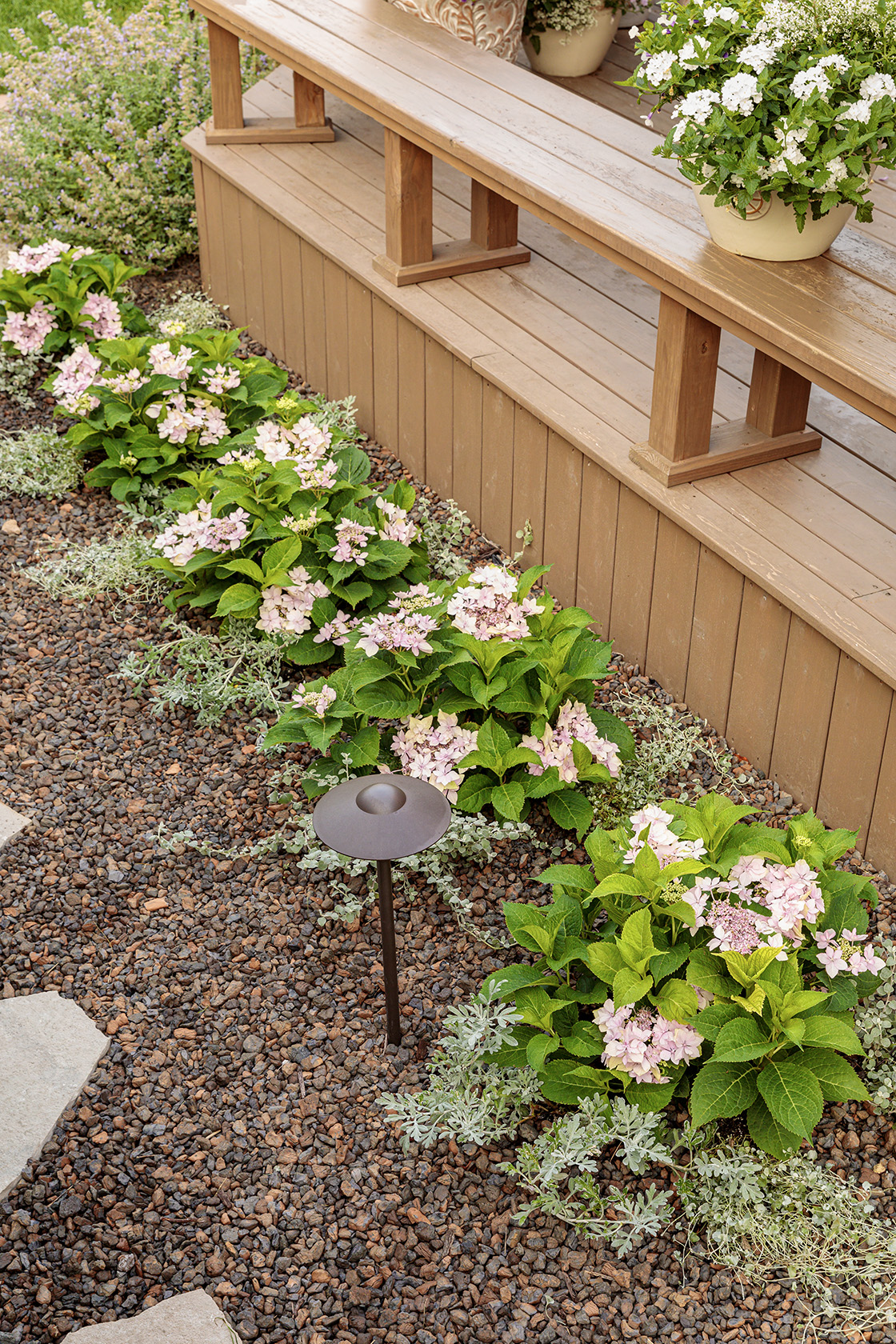
Soil
Proven Winners premium hydrangea potting soil works well for both temporary and permanent plantings. Its lightweight nature makes it easy for the roots to grow out, plus it makes lifting the container easier. Make sure you are using regular potting soil and not seed starting mix, as that may have little to no fertilizer added.
Watering
Attentive watering is the key to success! Containers dry out quickly, especially in the height of summer when it’s very hot and sunny. For successful potted hydrangea care, be sure to check your container every day and when it needs watering, do so thoroughly. Pour water around the entire base of your hydrangea (not just one spot), and do so until it starts coming out of the bottom. You’ll find that as your plant matures, it will need more frequent watering since the roots are starting to take up more of the soil space. Hand watering is a great option since it gives you an opportunity to observe your plant closely. However, to make watering easier, grow your hydrangeas in self-watering AquaPots or use our WaterWise® drip irrigation system.
Fertilizer
The fertilizer that comes in the hydrange potting soil is often enough to support temporary plantings, but for permanent plantings you’ll need to apply some each year after the first season. A great solution to a perfect potted hydrangea care is to use an all-purpose flowering shrub formula or a rose fertilizer, as these will have the correct ratio of nutrients for any hydrangea. In early spring, put the fertilizer around the base of the plant, but not touching any branches, and water it in thoroughly. Be sure that you don’t apply fertilizer after late July (late summer), as this can promote growth and prevent the plant from going into dormancy correctly.
Plant Choice - Consider these few factors when choosing a hydrangea
Zone
For a temporary planting, if you plan to transplant the hydrangea into your landscape, you’ll want to make sure it is hardy in your zone. If the hydrangea will be used like an annual, there’s no need to worry about its zone range.
For a permanent planting, choose a hydrangea that is hardy in your zone. If you plan to keep it in an area that experiences freezing winter conditions, you will need to use a variety that is two zones hardier than yours. For example, if you live in zone 6, a hydrangea that’s hardy down to zone 4 would work well.
Light Requirement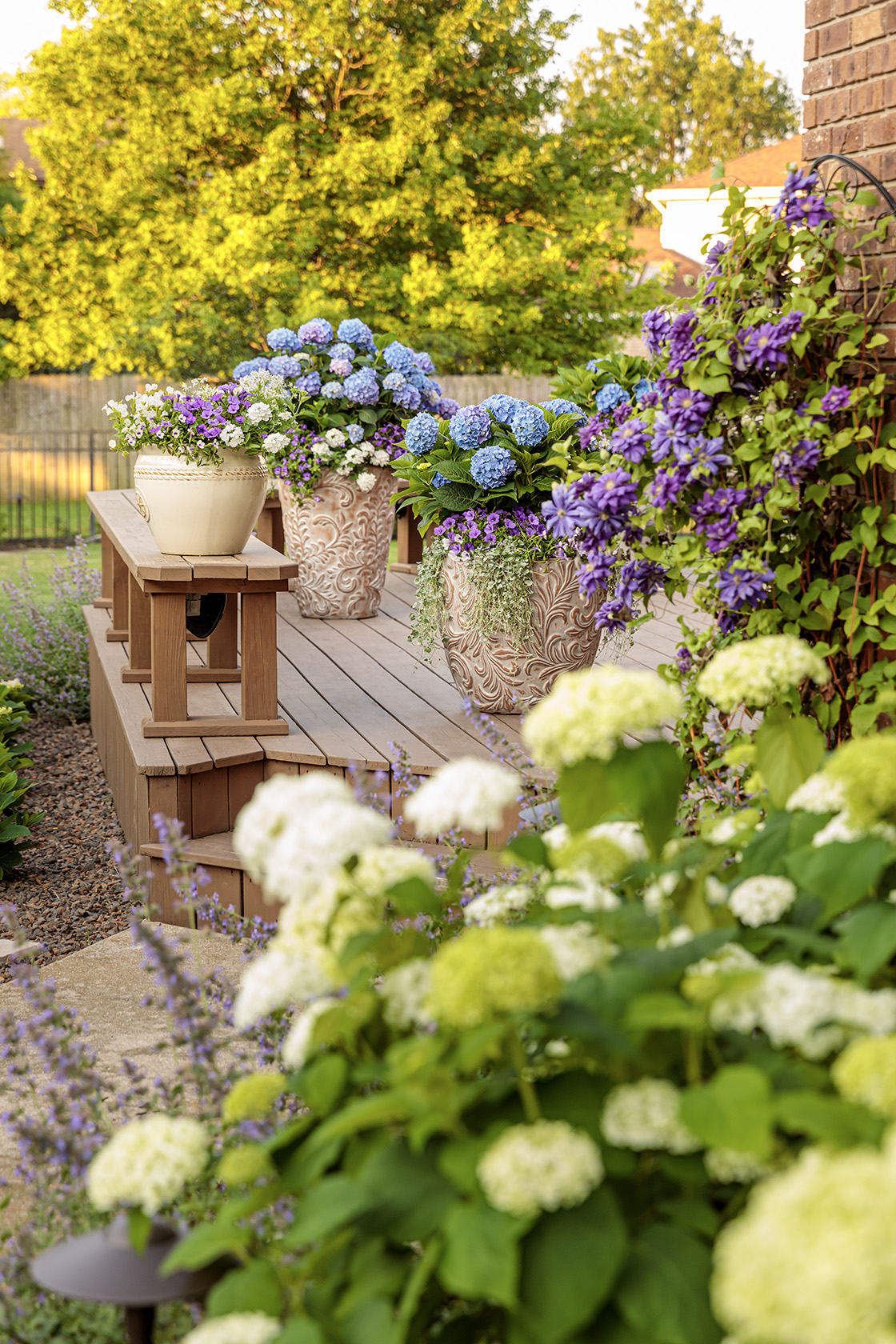
The place you choose for your hydrangea should receive at least some sun or all-day dappled light. In warm regions, your hydrangea would benefit from afternoon shade, as this will reduce water loss.
Plant recommendations for both light situations:
Full sun (6+ hours of direct sun) - Panicle hydrangeas are the most sun tolerant hydrangea. Try Limelight Prime®
Part sun (4-6 hours of direct sun) or dappled shade - Anything but oakleaf hydrangeas*. This includes mountain, smooth, panicle, and bigleaf hydrangeas.
*We don’t recommend oakleaf hydrangeas because they don’t often look their best when grown in a container. They flourish when planted in the ground. But if you enjoy the look, go for it!
Size
For a temporary planting, pick a hydrangea that’s already the physical size that suits your needs. It will grow a bit throughout the season, but not very much. Quart-sized hydrangeas look nice planted as a thriller, accompanied by annuals or perennials. Gallon sizes are often large enough to fill in a pot by themselves.
For a permanent planting, consider the eventual size of the hydrangea since it will be living and growing in your space for a few years. Choose one that is well-suited for the space you’d like to display it. Here are a few examples:
Compact
1-2.5 ft. tall and wide - Invincibelle Wee White® smooth hydrangea
2ft. tall and 2.5 ft. wide - Wee Bit Grumpy® bigleaf hydrangea
Mid-size
3-4 ft. tall and 3 ft. wide - Let's Dance Can Do™ Reblooming hydrangea
2-3 ft. tall and wide - Tuff Stuff Ah-Ha® mountain hydrangea
Large
6-8 ft. tall and 5-6 ft. wide - Quick Fire Fab® panicle hydrangea
Planting
Potting up your shrub is as easy as planting it in the landscape, but with a few minor tweaks. Starting off, if you’d like to prevent soil from escaping out of the bottom, you can cover the hole with a coffee filter, paper towel, or fine mesh. This will hold the soil in for a while, but still lets the water flow through. Next, you’ll fill the container with soil, up to the level where the bottom of your hydrangea will sit. Place the hydrangea (pot and all) into your container and fill soil around it, firming it into place as you go. Once the soil level of the potted hydrangea and the soil level around the outside match, remove the potted hydrangea. Gently take the plastic nursery pot off of your hydrangea and place the unpotted hydrangea back into the hole. Firm the soil in around the rootball. Water your new planting thoroughly. Come back an hour or so later and check that the soil is still level around the entire surface, since hydrangea potting soil will occasionally settle and slightly expose the rootball. Fill in any low spots and lightly water again. Place a 2” layer of mulch on the soil surface and your hydrangea is ready to show off!
Preparing for Winter
Whe you grow hydrangeas in pots, it can often overwinter in place, but you can move yours if you’re worried it might get blasted by harsh wind or suffer under piles of snow. The perfect spot would be next to your home, out of the wind, but still exposed to sun and able to receive precipitation. If possible, overwinter hydrangeas outdoors, as they need to be exposed to the elements to stay in their natural rhythm. Consider the pot material first though, since terra cotta pots can crack when left outdoors exposed to the elements. If you are growing a hydrangea that is not cold hardy at all, like a Cascade hydrangea, you can put them in an unheated garage, basement, or breezeway for the winter. Just be sure to water them periodically to mimic the precipitation the outdoors gets.
Soil moisture is important to successful potted hydrangea care, whether you live in a cold or a warm climate. For gardens that are warm year-round, be sure to check your hydrangea throughout the winter. Make sure the hydrangea potting soil is moist and give it a small drink if it’s on the dry side, but try not to soak it. For gardeners experiencing freezing winters, give your plant a healthy drink a couple of weeks before winter strikes, this will help it survive the drying winds of wintertime. In all climates, a layer of mulch around the base will help it retain water.
Transplanting
You’ll know your beloved hydrangea needs to be transplanted once it starts to slow down noticeably. It will either flower less or put on less height and width than normal. This can happen anywhere from three to five seasons after you’ve planted it. You can either transplant it into a bigger pot with new soil or find a spot for it out in your garden. Either way, you’ll plant it in the same manner you’re accustomed to planting a newly purchased shrub, but this time be sure to scratch those close growing roots vigorously with your fingers to loosen them up when repotting and it will happily grow on in its new home!
Related: Growing Hibiscus in Pots



